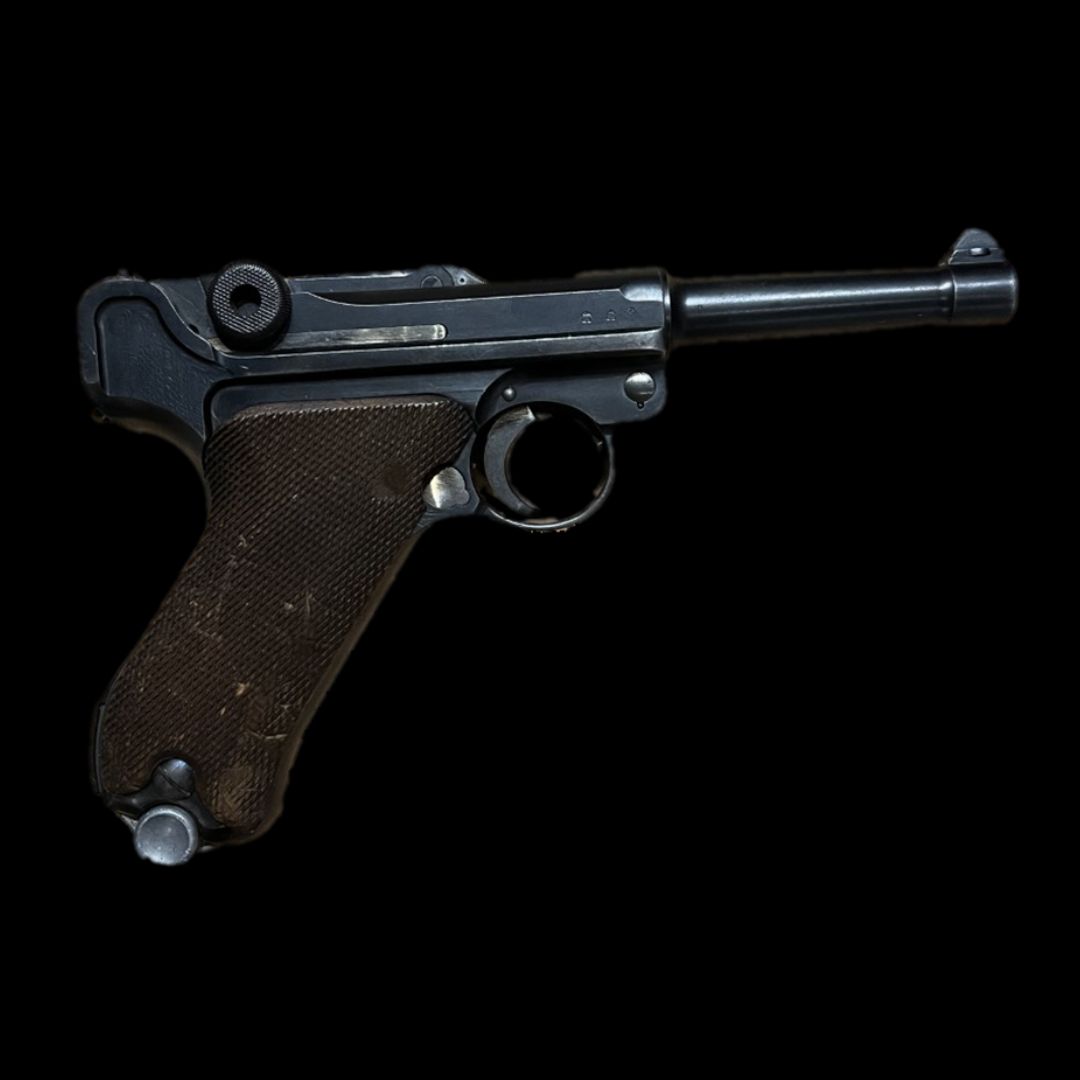
 The Luger
The Lugerby Nicholas Durell
The Parabellum pistol, more notably known as the Luger pistol, is one of the most exemplary pistols to ever be produced and serves as one of the most iconic weapons of the Second World War. Stemming from the design originally made by Hugo Borchardt, the Luger pistol was adapted and created by former soldier, turned weapon designer, Austrian Georg Luger in 1898. Like in Borchardt’s design, Luger sought to create an automatic pistol to replace the single-action revolver that dominated the world of sidearms.
In 1898, Luger developed his namesake pistol in Switzerland and Austria. Luger went through painstaking lengths to perfect the weapon in order to be competitive in the international firearm market.1 Luger put the pistol through numerous trials to increase its stopping power and to ensure a smooth magazine load. Eventually, after months of testing the Luger pistol was ready to be advertised. Luger offered his new sidearm to various nations such as Great Britain and the United States who both passed on the opportunity. The United States decided to go with the Colt 1911, a fellow 9-millimeter firing pistol. Instead, Switzerland and Germany became the first nations to purchase the rights to produce the weapon and through immediate production, Germany was the first to implement it in its military.
Later on, the Luger became the standard pistol of the German armed forces, first being used by the German Navy (first Kaiserliche Marine and then Reichsmarine/Kriegsmarine during the Second World War) and then in 19082 by the German army (Deutsches Heer later named Reichswehr and then the Wehrmacht) when it was called to service during the Maji Maji rebellion in Tanzania in 1908. Deutsche Waffen Munitionsfabriken (DMW), an ammunition maker, later turned weapons manufacturer, purchased the contract to produce the Luger, and with the help of Georg Luger, they successfully launched production.3 Due to its effectiveness and reliability in battle, the Luger would be used by the German army for another thirty years, seeing heavy use in the First World War.
Eventually, production of the Luger decreased due to production costs and difficult assembly methods. Before the beginning of the Second World War the Luger would be replaced by the Walther pistol to save on war time spending. The Luger did not completely fall out of favor for it was still used by domestic police forces in Germany. An attempt was made to produce the Luger once again by the original company that re-gained the ability/contract to produce the Luger from Georg Luger, DMW, however, production only lasted about a year.4 Despite the brief production, it did not stop many German soldiers and officers from carrying it with them during the Second World War. The Luger pistol was a popular sidearm for not only the German army but also caught the eye of the Allies as well, who ironically, were the first to be offered the pistol.5
During the First and Second World War, British and American soldiers sought to obtain Luger pistols as war spoils. The Luger had the reputation of being a remarkable and beautifully crafted weapon prompting so many Allied soldiers to seek one out as a prize in battle. For example, Private Don Malarkey, of the 506th Regiment, 101st Airborne Division, broke from his own company on a few occasions at the battles of Carentan and Brécourt Manor, risking his life just to try and obtain a Luger for himself.6
The Luger pistol was eventually replaced but still maintained its reputation as a quintessential piece of wartime weaponry that gained status through its superior quality and durability. The pistol’s rarity both in the time it was manufactured and re-manufactured contributed to its popularity. Today, this highly sought-after collectible finds itself being bought and sold in private markets or on display in museums related to the Second World War. The Luger pistol remains an iconic piece that showcases the quality and evolution of weaponry while exposing the cultural phenomenon where servicemen pursued war spoils both during and after battle. The Luger pistol will forever remain an iconic statement piece that is reminiscent of the Second World War.
Collection information: L2018.01 – 1936 German Luger pistol on loan from John Eierman
Article edited by Dr. Zachary Dowdle, William Woods University, Fulton, Missouri

Nicholas Durell is a graduate student at Chapman University in Orange, California. He is currently earning a Master of Arts in war and peace studies, specializing in military history. His main focus is on operational histories pertaining to the Second World War, Grenada, Operation Urgent Fury, the United States Marine Corps, and political history. Currently, he is writing on Operation Urgent Fury and the Marine Corps involvement and evolution as a war-fighting branch following the Vietnam War for his thesis. Outside of his graduate studies, Nicholas currently works as a middle school history teacher in Riverside, California. Upon graduating, he hopes to work in the field of museums.
1Eckert, John. “A Luger Short Story.” American Society of Arms Collectors Bulletin 111 (May 2015). 60.
2Grant, Neil, Alan Gilliland, and Johnny Shumate. The Luger. Oxford: Osprey Publishing, 2018. 80.
3Walter, John. The Luger Story: The Standard History of the World's Most Famous Handgun. Wren's Park, 2001. 37.
4Walter. 226.
5Walter. 82, 114.
6Ambrose, Stephen E. Band of Brothers. London: Simon & Schuster UK Ltd., 2017. 82, 154.
“Leave the past to history especially as I propose to write that history myself.”